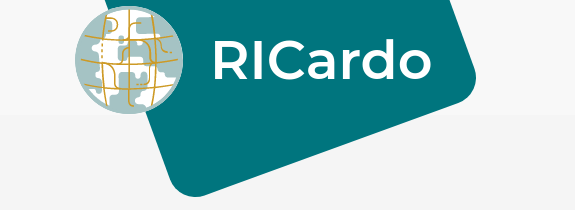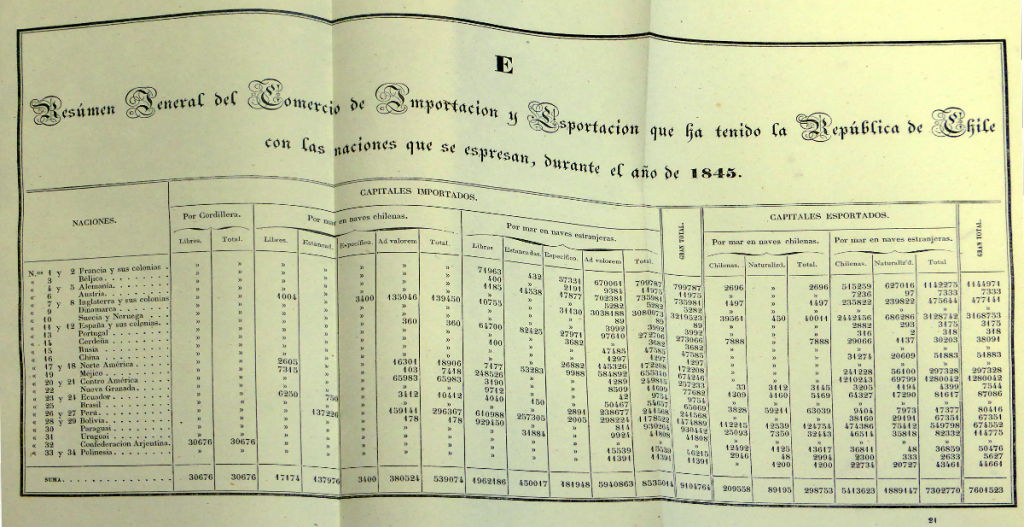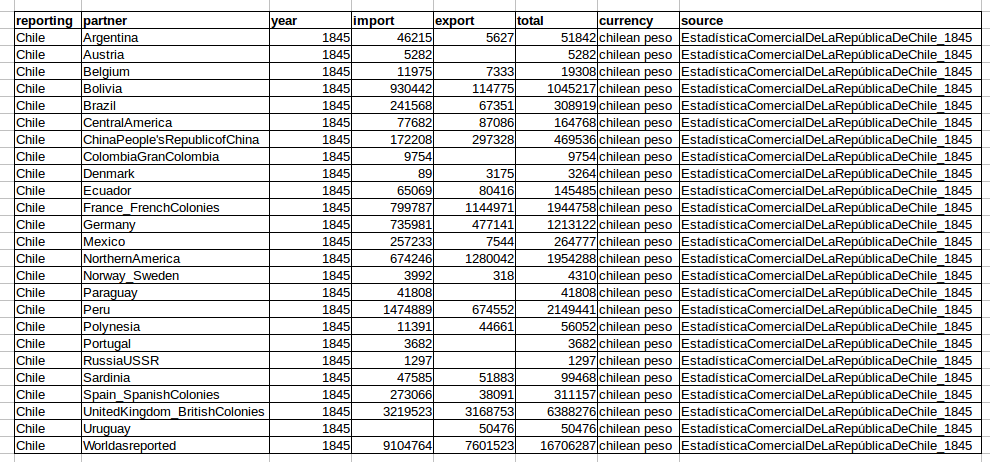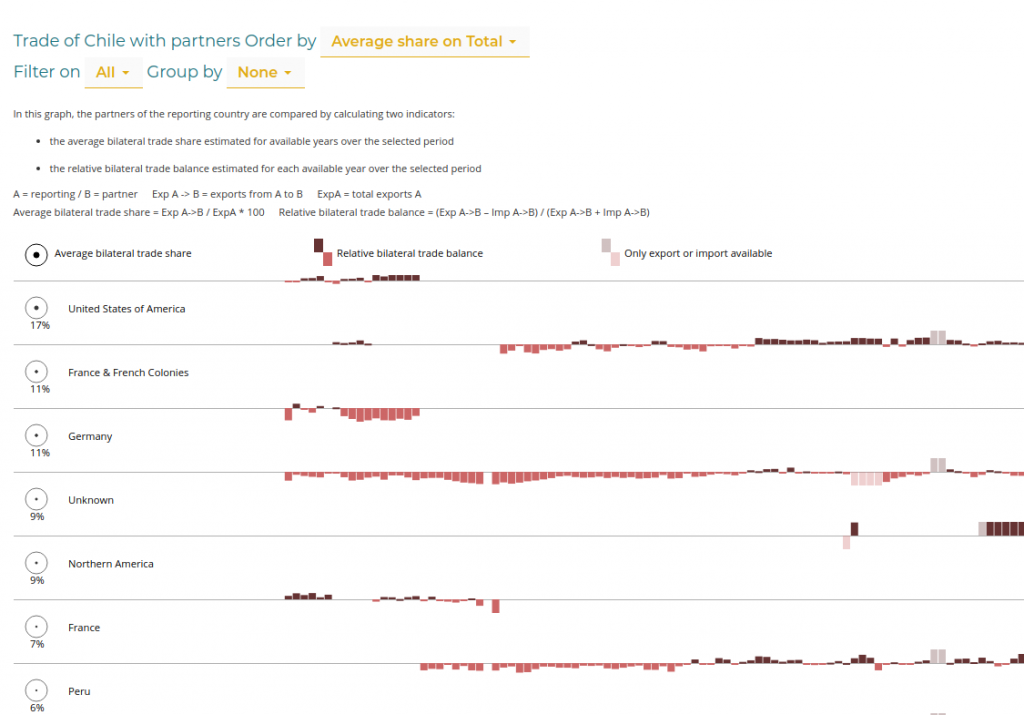RICardo (Research on International Commerce) is a project dedicated to trade between nations over a period spanning the beginning of the Industrial Revolution to the eve of the Second World War. It combines a historical trade database covering all of the world’s countries and a website which invites to an exploration of the history of international trade through data visualizations. The project has recently released a web application and accompanying dataset, which is freely available under the Open Database License. In this blogpost, Beatrice Dedinger (economic historian) and Paul Girard (IT engineer) illustrate its’ use cases and background.

The new RICardo web tool has been officially released in December 2017, on the occasion of the bicentenary of David Ricardo’s famous work, On the Principles of Political Economy and Taxation. It is the achievement of an experiment to combine economic history with digital humanities.
The RICardo project is devoted to bilateral and total trade of all the world’s countries over a period spanning from the beginning of the 19th century to 1938. Bilateral trade means the distribution of trade of a country by partners, on the export and the import side. Total trade is the sum of all bilateral flows. Notice that RICardo focuses on trade by countries; it does not provide statistics of trade by products and thus, does not allow for the analysis of trade specialization or comparative advantages.
We purposefully assembled data from the 19th and early 20th century, as this database never existed as such before. Governments did not start to publish printed documents of official trade statistics before the end of the Napoleonic wars. This is mostly true for the European states but also for other areas in the world that were under European influence. Since the end of the Second World War, the International Monetary Fund is in charge of gathering bilateral trade statistics of all countries; they are now freely available on http://www.imf.org/en/Data.
The RICardo database includes around 300.000 data points (December 2017 version) that have been collected by hand from archives found in French or foreign libraries. This is currently the most exhaustive trade database dedicated to historical bilateral trade statistics. Original data (trade flows, names of countries) being in different currencies and languages, they have been converted into a usable format by creating a relational database. The entire RICardo dataset is now freely available under the Open Database License in our versioned data repository described under the Data Package format.


RICardo is meant for studying and discovering the history of trade and trade globalization. How did countries become economically interdependent? How did the trade volume and variety of exchanges of goods and services develop across nations? Trade databases are needed to address these and similar questions. As an example, economic historians, relying on limited trade datasets, have first demonstrated that a “First” globalization occurred over 1870-1914. When they were afforded with extended trade databases, they challenged this conclusion to now affirm that trade globalization started around the 1840s.

But RICardo also allows for the study of neglected areas of the history of trade, largely because of the lack of data. It can help to explore the history of geopolitical trade relationships. If you are interested, for example, in the trade history of Chile over the 19th-mid20th century, RICardo provides you with visualizations and a dataset to describe Chile’s relationships with all its partners over the period of your choice.

RICardo offers the opportunity to discover the history of international trade not only through aggregate world trade curves but also by looking at the details of bilateral trade flows: visual exploration is key to handle the complexity of trade data by switching from an aggregate to a detailed level, or from one country to another. To do so, the tool uses a method developed at Sciences Po médialab called “datascape”. By considering data visualization from the very beginning, the research team can gain creative constraints that help to better design the dataset. Alternatively, data visualizations are a very efficient way to take care of the data, in particular, to check data integrity.
This project was very enriching on a personal level in that it taught us to work in a new way. At the beginning, in 2004, the project was launched by a team of researchers at Sciences Po Paris working on financial and trade history and needing historical trade datasets to perform a research idea. It was (still is) usual that each researcher builds by him/herself a trade database for the needs of personal research, ever trying to do better than the other. This way of working points to a competitive state of mind from which we moved away. During more than ten years of work, we have faced a lot of problems that eventually led us to work in a more collaborative, creative, and challenging way. This was the driving force in the achievements of RICardo. That is why we are keen to open our data to everyone, to share the results of our work with the widest audience, to open it to contributions, to foster its usage by the community, and to arouse the curiosity of the public about a subject a priori austere but that we try to address in an enjoyable way.
Béatrice Dedinger is an economic historian at the Centre d’histoire de Sciences Po (Paris). Her field of research is trade history and trade statistics. She has been working and publishing mainly on German trade history. Since 2004, she is the scientific coordinator of the RICardo project.








